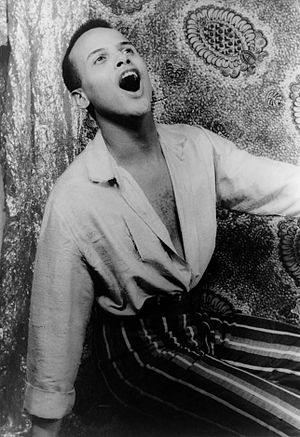 Image via Wikipedia
Image via WikipediaAnyone who has the faculty of speech is to a degree interested in having a clear vibrant voice. I would say that is because they want to be understood and secondly, the auditor experiences pleasure in listening. A vibrant voice is one that produces clear vowel sounds. Vowels are the only sound produced by the vocal chords that are fully vibrant.
A soft voice is one that permits the escape of unused breath during the production of vowel sounds. If this fault is quite pronounced, the voice is said to be “breathy”. If it is extreme, the voice is said to be hoarse. I’m sure you have heard these differences with singers.
No matter how light a puff of breath may be released through the opening between the vocal bands, careful listening will discern a resulting vowel sound, usually “uh” or “ah”. On the other hand, if in striving for power of sound, the controlling factor for pure vowels is simply achieved in the power of the voice. Volume of sound then becomes not a matter of effort but a reflex result of mental stimulus.
English words are composed of more consonants than vowels, with consonants usually at the beginning and end of each syllable. While all the vowel sounds can be produced without movement of the jaw or lips, this is not true of consonants.
Most studies of voice and speech are too complex for me. So we know it’s more than just A, E, I, O, U and sometimes Y. Sometimes turning to the dictionary can be more confusing rather than helpful.
Italian is a favorite language of singer’s because of its wealth of vowels but there is really more vowel material available in English. One can go into great detail analyzing the alphabet and distinguishing between true vowel sounds, diphthongs (meaning complex speech sounds that begins with one vowel and gradually changes to another vowel within the same syllable) and consonants.
I have found with the word “see” it is necessary to emit more breath to form “s” than is necessary in producing the vowel “ee” which follows. So the vowel must be the primary consideration in order that the mechanism of the throat will adjust itself to utilize every bit of breath passing the opening between the vocal bands during the formation of the vowel. The “s” sound by its very nature must be breathy while the sound following must be just the reverse.
When you pronounce “B” the vowel “ee” impounds in the throat by your lips pressed together and then released. When you say “D” the vowel “ee” impounds in the throat by the tip of your tongue against the roof of your mouth and released. And then with “F” the vowel sound “eh” is followed by an escape of air between the lower lip and upper front teeth. So yes, it’s very true that forming vowels properly will add character and color to the sound of your voice, especially your singing voice.
Comments are welcomed and encouraged!
Thanks for stopping by.
I hope you enjoy your stay at Piano Diana.
![Reblog this post [with Zemanta]](http://img.zemanta.com/reblog_e.png?x-id=147714f3-5af1-4e5a-b027-a0970be005c1)



